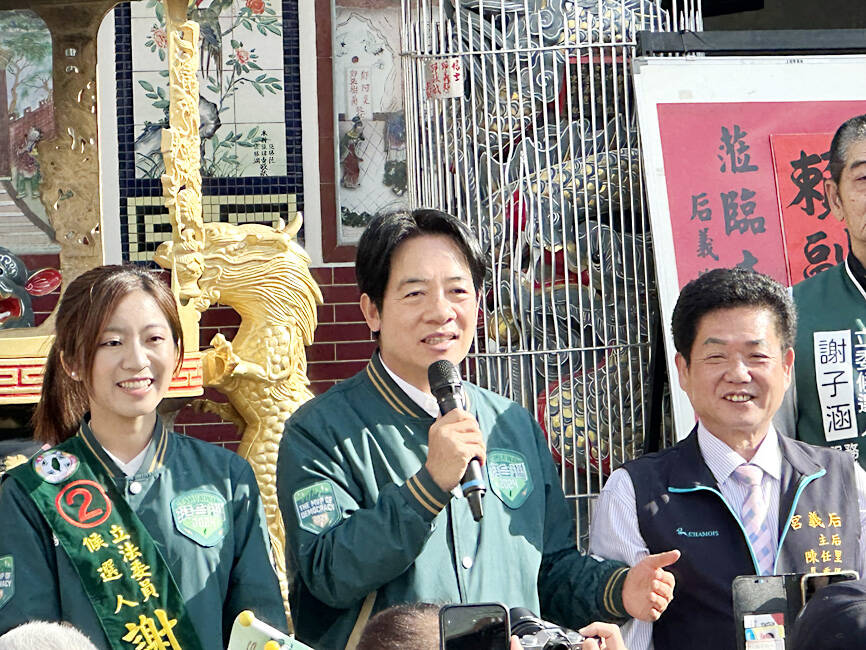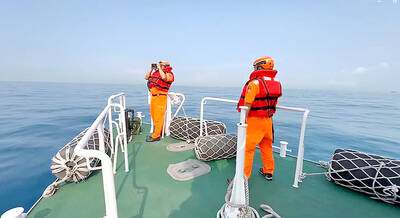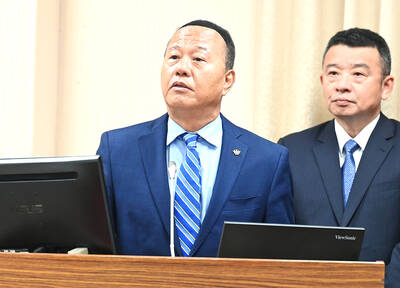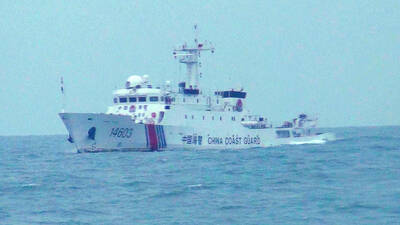Democratic Progressive Party (DPP) presidential candidate Vice President William Lai (賴清德) yesterday appealed to voters to give him “a chance to lead Taiwan forward” and introduced his “four major paths” plan for the nation.
“We are in the new year, facing fresh challenges, as global supply chains are being reorganized and the world is confronting great climate change challenges,” Lai said. “Through our collective endeavors, the world has elevated Taiwan to an important position, and everyone now sees that Taiwan belongs to the world.”
“Let us not go backward. Vote for the right people,” he said. “Please give me this chance to lead our nation forward, to challenge ourselves to grow further, to transform our nation and adapt to major changes in the world.”

Photo: CNA
Lai’s four major paths are democracy and freedom, enhanced international trade to ensure economic growth, expanded investment in people and society, and energy transition.
“The first path is to proceed on the road of democracy to safeguard freedom and the democratic system, under the four pillars of preserving peace,” he said.
The four pillars are: bolstering national defense; boosting multilateral trade ties; forging closer links with countries, so that they recognize Taiwan’s freedom and human rights based on its democratic governance; and promoting interactions with China, but only by upholding the principles of mutual respect and equality, he said.
Taiwan’s “path to economic prosperity” would not follow the Chinese Nationalist Party’s (KMT) route of overreliance on China, nor would the DPP restart the cross-strait services and trade agreement, “as these run contrary to current global trends,” Lai said.
He pledged to spend on basic infrastructure, and on the artificial intelligence, semiconductor, indigenous military arms, video recording and surveillance, and digital telecommunications sectors.
Taiwan would endeavor to fill essential roles in new global supply chains, to ensure economic growth, he added.
The third path would be boosting investment in people and society, which would include welfare and healthcare programs for social justice, Lai said.
He listed new projects such as investing in the next generation from birth to the age of 22 and a “long-term care plan 3.0,” as well as policies to ensure housing justice, expand the nation’s social safety net and support low-income families financially.
For the fourth path, Lai pledged to implement programs that would drive the government’s net zero emissions strategy, and improve the resilience of Taiwan’s electricity grid.

GOOD DIPLOMACY: The KMT has maintained close contact with representative offices in Taiwan and had extended an invitation to Russia as well, the KMT said The Chinese Nationalist Party (KMT) would “appropriately handle” the fallout from an invitation it had extended to Russia’s representative to Taipei to attend its international banquet last month, KMT Chairman Eric Chu (朱立倫) said yesterday. US and EU representatives in Taiwan boycotted the event, and only later agreed to attend after the KMT rescinded its invitation to the Russian representative. The KMT has maintained long-term close contact with all representative offices and embassies in Taiwan, and had extended the invitation as a practice of good diplomacy, Chu said. “Some EU countries have expressed their opinions of Russia, and the KMT respects that,” he

An increase in Taiwanese boats using China-made automatic identification systems (AIS) could confuse coast guards patrolling waters off Taiwan’s southwest coast and become a loophole in the national security system, sources familiar with the matter said yesterday. Taiwan ADIZ, a Facebook page created by enthusiasts who monitor Chinese military activities in airspace and waters off Taiwan’s southwest coast, on Saturday identified what seemed to be a Chinese cargo container ship near Penghu County. The Coast Guard Administration went to the location after receiving the tip and found that it was a Taiwanese yacht, which had a Chinese AIS installed. Similar instances had also

VIGILANCE: The military is paying close attention to actions that might damage peace and stability in the region, the deputy minister of national defense said The People’s Republic of China (PRC) might consider initiating a hack on Taiwanese networks on May 20, the day of the inauguration ceremony of president-elect William Lai (賴清德), sources familiar with cross-strait issues said. While US Secretary of State Anthony Blinken’s statement of the US expectation “that all sides will conduct themselves with restraint and prudence in the period ahead” would prevent military actions by China, Beijing could still try to sabotage Taiwan’s inauguration ceremony, the source said. China might gain access to the video screens outside of the Presidential Office Building and display embarrassing messages from Beijing, such as congratulating Lai

Four China Coast Guard ships briefly sailed through prohibited waters near Kinmen County, Taipei said, urging Beijing to stop actions that endanger navigation safety. The Chinese ships entered waters south of Kinmen, 5km from the Chinese city of Xiamen, at about 3:30pm on Monday, the Coast Guard Administration said in a statement later the same day. The ships “sailed out of our prohibited and restricted waters” about an hour later, the agency said, urging Beijing to immediately stop “behavior that endangers navigation safety.” Ministry of National Defense spokesman Sun Li-fang (孫立方) yesterday told reporters that Taiwan would boost support to the Coast Guard